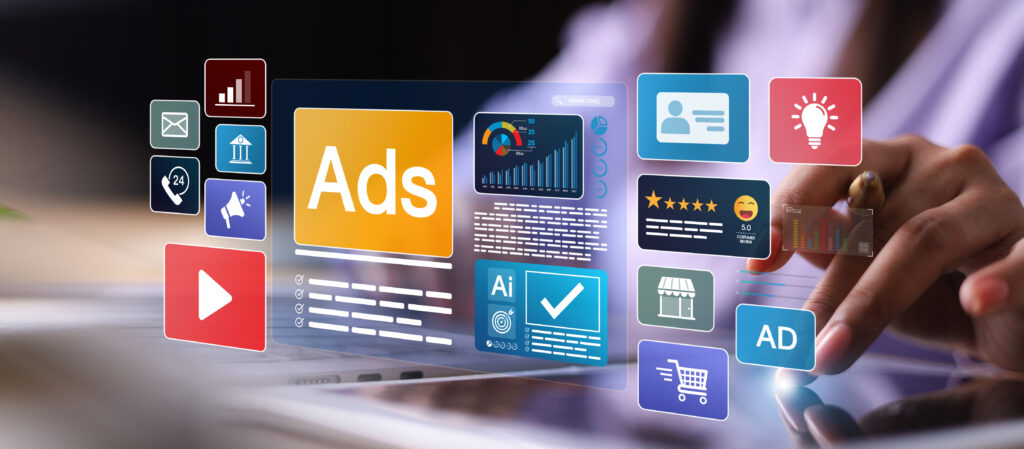Social media is a beast of its own, and There are so many different types of social media interactions that it’s hard to say exactly where any of these fit into your sales funnel. As such, there are multiple schools of thought about where it fits into your sales funnel. Some will say it fits in each stage. Others will say it belongs in the brand awareness and discovery phase, and still others will say it deserves its own separate funnel. The right answer for you depends heavily on a number of factors, such as: what you’re selling, the kind of following you have on social media, and how much time and money you have available for marketing.
Because I believe social media belongs in all stages of the sales funnel, since it covers the entire spectrum of the buying process, I’m going to focus this article on how to build social media into your current funnel, or how to align your social media efforts with your sales funnel. I’ve already talked about how to build your sales funnel – so put these together, and you’ll be unstoppable.
Overview
Remember the Purpose of Social Media
Yes, it’s true people make a living off of social media. But it’s not about constantly selling. If you’re using social media that way, chances are you’re not highly successful, and that’s because you’re using it wrong.
People come to social media to connect with one another. They want to check in with friends and family, and maybe even see what their old high school flame is up to these days. And while people are willing to follow the brands they know and love, and use it to discover new ones to fall in love with, they’re not there to listen to your sales pitch.
Social at the Top of the Funnel (TOFU)
This one is easy – you obviously use social media to bring traffic to your website, and bring them into the sales funnel from there with an email opt-in. Here, you focus on building a following of people who fit your target audience, and engaging them with content that educates them about your brand and the products and services you offer. To bring these leads in via social media, create your customer personas, based on statistics about who your customers are – and even taking the time to interview your most valuable customers.
At the top of the funnel, you’ll share blog posts, articles, infographics, podcasts, videos, and slideshow presentations. Remember to curate a good portion of your content, so you avoid becoming a constant sales pitch. Share content from others that your audience will also find useful, and they’ll see you as a credible, trustworthy source.
To see how well social is working for you here, you’ll need to choose key performance indicators (KPIs) for this stage of the funnel. These will help you in determining how well your strategy is working to help you reach your goals and making sure you’re getting a good return on investment (ROI) on the resources you’re spending. Common KPIs for TOFU include: social reach, traffic sources, visits and social shares, growth in traffic, and email click through rate.
Social at the Middle of the Funnel (MOFU)
At the middle of the funnel, you’ve got people who are aware of your brand and possibly interested in your products or services. They’re not ready to buy yet, but with the right level of nurturing from you, they can be. These people are already on your email list, so you’re connecting with them on multiple channels, including social media.
At this point, you’ll share things like guides and eBooks, interviews with experts, white papers, case studies, use cases, webinars, and analyst reports. You’re trying to continue the education process, but also show people how what you have to offer solves a problem for them – and you need to prove that it has worked for others in the past, because social proof helps convince people to buy.
You’ll also want to have a bit of customer service here, as well. Just because they are not your customers yet doesn’t mean they won’t have questions or concerns that need addressing before they are willing to buy your product. If they reach out to you on social media and you don’t answer them, you risk losing them as a customer. Nearly half of consumers expect a response on social media within an hour, and more than ¾ aren’t willing to wait more than 24 hours.
You’ll need to establish a different set of KPIs here to determine how well the strategy you’re using here is working. Because you still need to keep social media activity for the top of the funnel moving, this gives you a chance to provide variety in the content you create and share, so as to appeal to all followers, regardless of where they are in your sales funnel. Common KPIs for this stage include: social engagement, lead generation and conversion, bounce rate and time on page, and visitor to lead ratio.
Social at the Bottom of the Funnel (BOFU)
At the bottom of the funnel, you’ve created customers. They’re ready to convert, you just need to push them over the edge so they become a paying customer. You can do this by sharing a variety of customer testimonials and endorsements – more of that social proof – and demos of your products and services, so they can experience everything first hand. The only real KPI you need here is sales.
Social Media After the Sale
Because it costs six to seven times more to acquire a new customer than it does to market to an existing one, and because repeat customers are more valuable than first-time buyers, it literally pays to continue nurturing your customers after the sale. 40% of an ecommerce store’s revenue is created by 8% of its customers, after all.
JetBlue Airways is a great example of using social media after the sale. Sure, it’s easy to use Twitter to push promotional offers and fare discounts, but instead, they focus on providing customer service. One look at their profile, and you’ll see the majority of the activity is @ replies. They’re showing people they are listening and will take the time to reply, which is helping them build a reputation among consumers, and making them more appealing.
Every Buyer’s Journey is Unique
As much as we’ve come to rely on the funnel model to describe the customer journey, the reality is, for many customers, the journey is anything but. Some customers may find you and make a purchase on their first visit because of a recommendation from a friend or family member. Some customers may move through the “funnel” only to hesitate on a purchase because of a financial emergency. Just because you have a plan to bring customers in at the top and push them through to the bottom to convert them, doesn’t mean you’ll get customers that follow that path exactly.
And that’s okay. It doesn’t matter how your customers get to you. What matters is that they get what they need from you. A product or service that solves one of their major problems, at a price they are willing (and can afford) to pay; with stellar customer service that keeps them not only coming back for more, but sending their friends and family to you as well.
How do you align social media with your sales funnel? Do you have a completely separate funnel for social media activity? Share your thoughts with me in the comments below.
Contact us today to get the conversation started!










